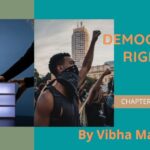Checkout handpicked notes of NCERT class 11th History Chapter 2 Writing and City Life notes by Vibha Maam and don’t forget to share your valuable comments in the comment below to motivate our author.
Writing and City Life Notes by Vibha Maam
Mesopotamian Civilization
- Mesopotamia means land between two rivers Euphrates and Tigris.
- Mesopotamia civilization is known for its prosperity. Today it is part of the Republic of Iraq.
- Languages:- Sumerian, Akkadian, Aramaic.
- Sumerian was the first language of Mesopotamia.
- Around 2400 BCE, it was called Akkadian civilization.
- Aramaic language is similar to Hebrew language and still spoken in part of Iraq. Mesopotamia is famous for literature, mathematics, astronomy, writing, city life and trade.
- Mari, Babylon Ur, Uruk were the main cities of Mesopotamia.
- Agriculture began between 7000 and 6000 BCE in Mesopotamia.
Geographical features of Mesopotamia
- In the north upland called Steppe, the Mountains of Iran is to the East, the South is a desert but It was the most productive region in Mesopotamia due to the two rivers Euphrates and Tigris.
- Mesopotamian grew wheat, Barley, peas or lentils. They also produce meat, milk and wool in abundance.
The Significance of Urbanism
- Urban economies comprise besides food production, trade, manufacturers and services.
- The ‘Division of Labour‘ is a unique feature of urban life. There is a continuous interaction among them .
- There must be a social organisation in place to handle all these.
- Urban economies require keeping written records.
Movement of Goods into Cities
Mesopotamia had good food resources but poor in mineral resources. So we can imagine that the ancient Mesopotamian could have traded their textile and agricultural produce for minerals like wood, copper, tin, silver, gold from Turkey and Iran or across the gulf, because these regions had less scope for agriculture; so therefore regular exchange were possible here by social organisations.
Foreign expeditions and direct exchanges were initiated by the people of Southern Mesopotamia.
For urban development, efficient transportation is also important. Water transport is the cheapest mode of transport. The canals and natural channels (Euphrates) were in fact routes of goods transport between large and small settlements.
The Development of Writing
- To convey messages orally is known as ‘Verbal Communication‘. Written script has spoken sound and known as ‘visible signs‘.
- The first Mesopotamian tablets written around 3200 BCE.
- Mesopotamians wrote on tablets of clay with the help of reed in wedge-shaped (cuneiform).
- Cuneiform writing in the Akkadian language continued to be used from the 1st century CE. Writing was seen as a sign of the superiority of Mesopotamian urban culture.
Urbanisation in Southern Mesopotamia (Uruk)
Temples and Kings
The earliest cities were of various kinds:-
- Those that gradually developed around temples,
- Those that developed as centre of trade
- & Imperial cities.
- Uruk was one of the earliest temple towns. Around 3000 BCE, Uruk grew to the enormous extent of 250 hectares, (twice times larger than Mohenjo-Daro)
- The earliest temple was made of unbaked bricks. Over time, temples become larger.
- Temples were the house of various gods like the moon, God of Ur, Inanna, the goddess of love and war.
- The God was the focus of worship, people offer grain, curd, fish to the god as their gratitude.
- Gradually the processing of produce like spinning, grinding, oil pressing was done in the temple.
- The king had high status and authority to command the community.
- War captives( prisoners) and local people were put to work for the temple or directly for the ruler
- Those who were to put work for paid rations, cloth and oil. hundreds of ration lists have been found.
- Around 3000 BCE, bronze tools came into use increasingly in Uruk.
- “Enmerkar and Gilgamesh” were the rulers of Uruk.
Life in the City
- In Mesopotamian society, the nuclear family was practiced.
- The father was the head of the family and the father’s property (house, herds, field etc) were inherited by the sons.
- The ordinary houses of Ur were excavated systematically in the 1930.
- Narrow winding streets, irregular shapes of house plot, no street drains, unpaved streets indicate that there were superstitions about houses, recorded in the omen tablets.
- Commoners were buried under the floor of ordinary houses whereas ruling Elites were buried in graves with some riches like Jewellery, gold, white shell and lapis lazuli etc.
A Trading Town in a Pastoral Zone (Mari)
- After 2000 BC, the royal capital of Mari flourished.
- Some communities in the kingdom of Mari had both farmers and pastoralists. Mari was exceptionally prosperous.
- Herders need to exchange young animals, cheese, leather, in return for grain, metal tools etc.
- Yet, at the same time there may be conflict between herders and farmers.
- A few gained the power to establish their own rule. These included the Acadian, Amorites, Assyrian and Aramaic.
- The kings of Mari were Amorites who respected not only the god of Mesopotamia but also raised the temple at Mari for Dagon, God of the steppe.
Don’t forget to comment in the comment section below to appreciate and motivate our author by sharing this notes with your friends you can also Contact us for any query or if you are interested in writing with us.
Use Canva for amazing images.
Stay tuned for more amazing stories, poems & articles like this.











Thanks mam ,atleast you have accepted my request and worked for this chapter thanks a lot
Thank you mam for providing these. Owesom notes
thanks mamfor helpful notes
Tnx mam
Thank you so much😊😊❤❤
No wayes
Likes The Notes Made By Teacher
Thnx but are these notes completed?